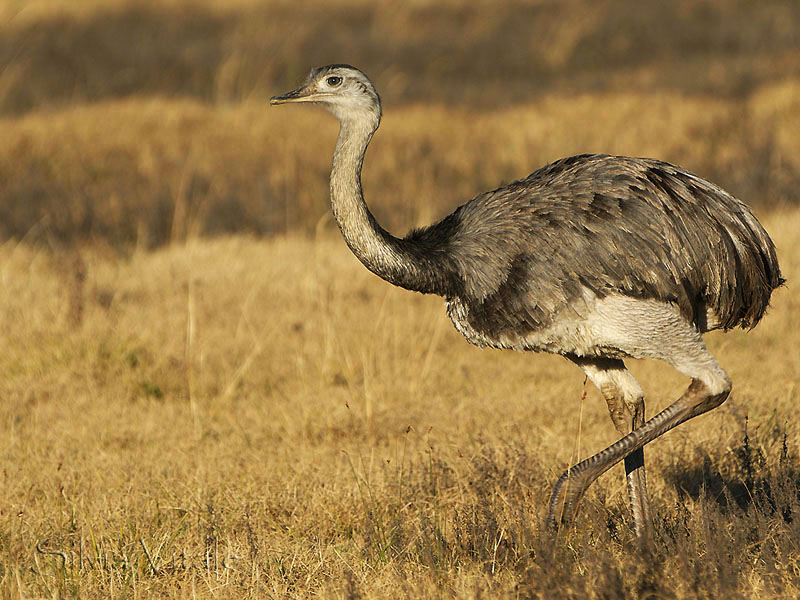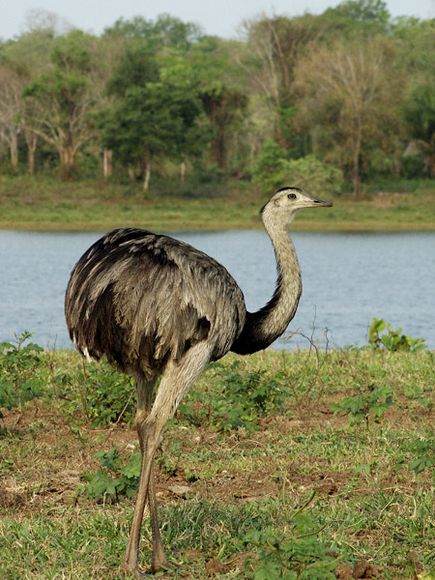
Rhea americana
TAXONOMY
Rhea americana Linnaeus, 1758, Sergipe and Rio Grande do
Norte, Brazil. Five subspecies.
OTHER COMMON NAMES
English: Common rhea; French: Nandou d’Amйrique; German:
Nandu; Spanish: Сandъ.
PHYSICAL CHARACTERISTICS
50–55 in (127–140 cm); 44–88 lb (20–40 kg). General color
gray or grayish brown above, whitish below without spotting in
both sexes. The head and neck of the male are black or largely
black. The female is paler. Unlike the lesser rhea, the whole
length of the tarsus is bare and covered with transverse scutes.
DISTRIBUTION
Brazil, Uruguay, Paraguay, and Bolivia. The form in eastern
Brazil, Rhea americana americana is the nominate, or first
named, form. R. a. intermedia comes from southeastern Brazil
and Uruguay, R. a. nobilis from Paraguay, R. a. araneiceps from
Paraguay and Bolivia, and R. a. albescens from Paraguay and,
possibly, Bolivia.
HABITAT
Grassland and pampas.
BEHAVIOR
Greater rheas live at densities of 0.002–0.076 birds per acre
(0.05–0.19 birds/ha). In the nonbreeding season they live in
flocks of 20–50 birds. Once the breeding season starts, males
establish a nest site and defend its immediate vicinity, attracting
groups of females to lay in the nest.
FEEDING ECOLOGY AND DIET
Herbivore, feeds on grasses and forbs.
REPRODUCTIVE BIOLOGY
Males incubate eggs laid by harem of females in a nest on the
ground. The mean clutch size is 26, the eggs coming from up
to seven different females. Females are attracted to the nest by
male displays in which the wings are prominently displayed.
The male leads the female to the nest and often sits on it while
she lays outside it. He then rolls the egg into the nest. Eggs
are greenish yellow color, 5 by 3.5 in (13 by 9 cm). Incubation
period is 29–43 days, by the male only.
CONSERVATION STATUS
Population fragmented by agricultural development.
SIGNIFICANCE TO HUMANS
Hunted for meat, leather, and feathers; now farmed.
Other popular Animals
Photo Gallery of - Greater rhea




 Animalia Life
Animalia Life